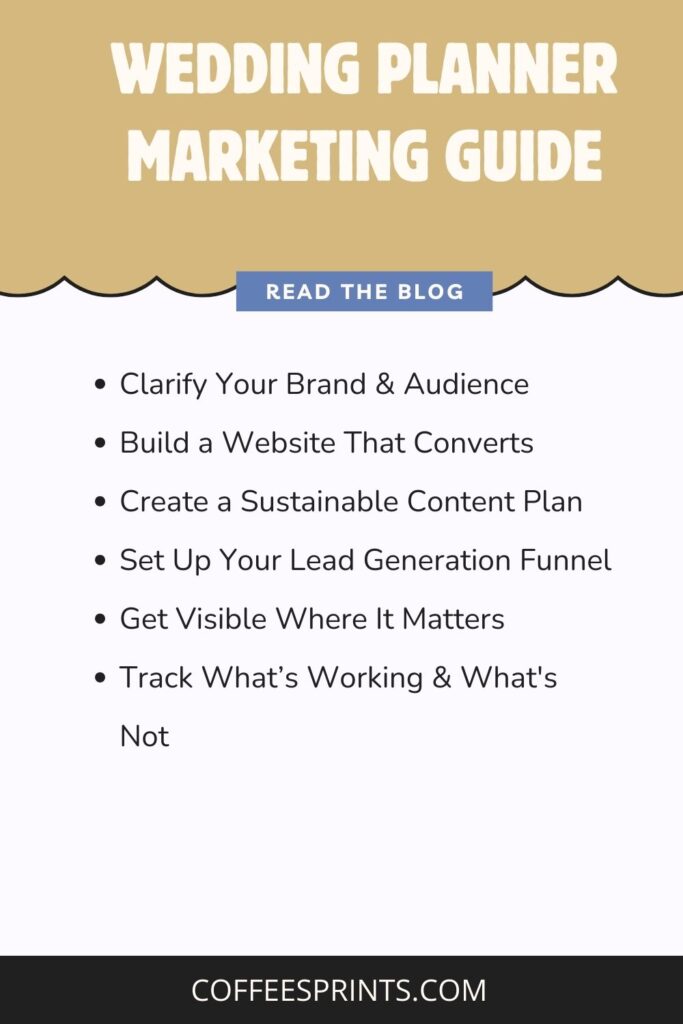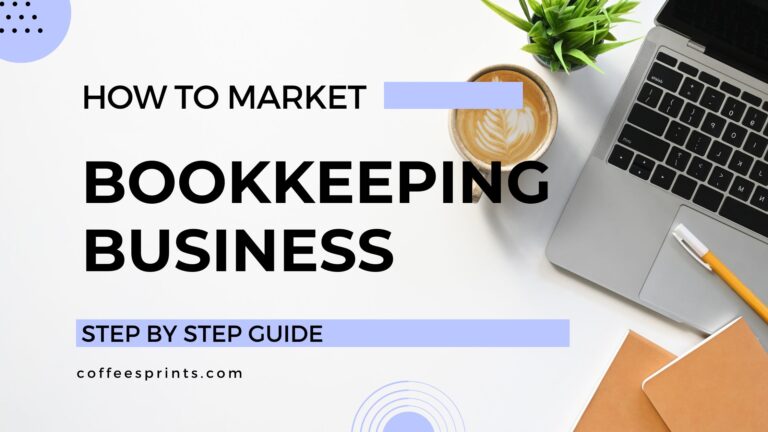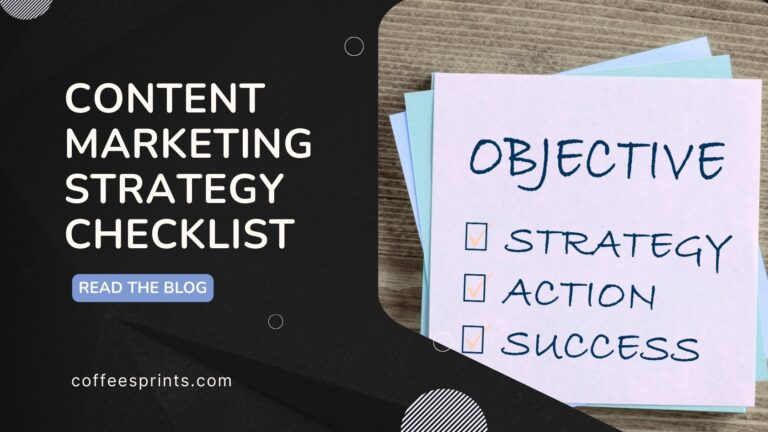Wedding Planner Marketing: How to Build a Plan That Actually Books Clients
So, you’re a wedding planner. You’ve got the eye for aesthetics, the nerves of steel, and the spreadsheets to match. But if you’re struggling to attract the kind of clients you want (and not just the last-minute panickers), your marketing might need a glow-up.
This comprehensive guide will walk you through a no-fluff, action-ready marketing plan for wedding planners. Whether you’re starting out or refining your strategy, this is for solopreneurs, side-hustlers, or seasoned planners looking to grow smartly without burning out.
Why Most Wedding Planner Marketing Falls Flat (And How to Fix It)
Here’s the truth: Just posting pretty pictures on Instagram isn’t a strategy. Neither is hoping referrals will magically appear.
The biggest mistakes wedding planners make stem from treating marketing like an afterthought instead of a core business function. Generic messaging that could apply to any planner in any city is epidemic in this industry. You see it everywhere – vague promises about “making your day special” or “stress-free planning” that tell couples absolutely nothing about what makes you different.
Inconsistent posting patterns make you look unprofessional and unreliable. If you can’t maintain a consistent social media presence, how can couples trust you to coordinate their wedding day? The lack of a clear process for turning followers into paying clients means you’re essentially running a free inspiration service instead of a business.
Most damaging of all is competing on price instead of value. When you lead with low prices, you attract couples who see wedding planning as a commodity. These clients will haggle over every detail, question your expertise, and ultimately leave you feeling undervalued and overworked.
The local SEO piece is particularly costly to ignore. Every day, couples search for “wedding planner near me” or “wedding planner in [city],” and if you’re not showing up in those results, you’re missing out on qualified leads who are actively looking to hire someone like you.

If you’re not showing up where your clients are looking, speaking directly to what they care about, and making it ridiculously easy to trust and hire you, then you’re leaving money and dream clients on the table.
Step 1: Clarify Your Brand & Audience (The Foundation Everything Else Builds On)
Before you market anything, you need to know who you’re speaking to. This isn’t just about demographics like age and income – it’s about understanding the psychological drivers that motivate your ideal clients to hire a wedding planner.
Define Your Ideal Client Avatar
The service level question is crucial because it determines everything from your pricing structure to your content strategy. Full-service planning clients need different messaging than coordination-only clients. The full-service client is typically overwhelmed by the entire process and needs reassurance about your ability to handle every detail. The coordination client has already done most of the work, but needs confidence that you can execute their vision flawlessly.
Budget range isn’t just about money – it’s about values and priorities. A couple planning a $50,000 wedding has different concerns than one planning a $150,000 celebration. The first might focus on maximizing value and avoiding costly mistakes, while the second might prioritize exclusive experiences and luxury touches.
Understanding whether they care more about design, logistics, or stress-free experience helps you position your services correctly. Design-focused couples want to see your aesthetic skills and creative vision. Logistics-focused couples need to understand your organizational systems and vendor management abilities. Stress-free couples want testimonials about your calm presence and problem-solving skills.
The pain points question reveals what keeps your ideal clients up at night. Are they worried about family drama? Overwhelmed by vendor research? Stressed about timeline management? When you understand their deepest concerns, you can create content that directly addresses these fears and positions you as the solution.
Create Client Personas
Let’s dive deeper into two primary personas that most wedding planners encounter:
The “Busy Professional Bride” represents a significant portion of today’s wedding market. She’s typically between 28-35, has established her career, and earns $75,000 or more annually. She values efficiency above all else because time is her most precious resource. Quality matters to her because she’s learned that cheap solutions often cost more in the long run. Peace of mind is what she’s really buying when she hires a wedding planner.
Her pain points are very specific. She doesn’t have time to research vendors, compare proposals, or manage multiple relationships. She gets overwhelmed by the sheer number of decisions required for wedding planning. She worries about things falling through the cracks because she can’t dedicate the time needed to follow up on every detail.
She prefers email communication because it fits into her work schedule, and she appreciates scheduled calls over impromptu conversations. Her budget range of $75,000-$120,000 reflects her income level and desire for quality, but she’s not unlimited in her spending.
The “Design-Obsessed Couple” represents the Instagram generation of wedding planning. They’re typically younger, between 25-32, with household incomes of $60,000 or more. They value unique aesthetics and Instagram-worthy moments because their wedding is also a personal brand statement. They’ve been planning their wedding on Pinterest for years before they even got engaged.
Their pain points center around finding something unique that reflects their personality rather than following cookie-cutter wedding templates. They want something that will stand out in their social media feeds and make their friends envious. They’re willing to invest in design elements but may need guidance on budget allocation.
They prefer visual communication channels like Instagram DMs and Pinterest boards. They respond well to behind-the-scenes content and design process documentation. Their budget range of $40,000 to $80,000 reflects their willingness to invest in aesthetics while remaining mindful of overall costs.
Nail Your Unique Value Proposition
Your UVP should answer the question: “Why should someone hire YOU over every other wedding planner?” This isn’t about being the cheapest or having the most experience – it’s about identifying what makes you uniquely valuable to your ideal client.
Consider positioning yourself as “The only wedding planner in [City] who specializes in stress-free luxury weddings for busy professionals.” This UVP immediately identifies your target market (busy professionals), your service level (luxury), and your primary benefit (stress-free). It also includes geographic specificity, which helps with local SEO.
Alternatively, “Sustainable wedding planning that doesn’t sacrifice style” appeals to environmentally conscious couples who want to align their wedding with their values without compromising on aesthetics. This UVP differentiates you from planners who treat sustainability as an afterthought.
“Micro-wedding specialist turning intimate celebrations into unforgettable experiences” targets the growing micro-wedding market while promising transformation from simple to spectacular. This UVP works particularly well in the post-pandemic wedding landscape, where smaller celebrations have become more popular.
Coffee Sprints Tip: Not sure who your ideal client really is? Our strategy sprints can help you nail your niche and messaging.
Step 2: Build a Simple Website That Converts (Your 24/7 Sales Rep)
Yes, even if you get most of your leads from Instagram. Your website is where serious inquiries go to decide if they want to hire you. It’s your digital storefront, and it needs to work as hard as you do.
Essential Pages Every Wedding Planner Needs
Your homepage is your digital handshake. The headline should immediately communicate what you do and for whom. Instead of “Welcome to Sarah’s Wedding Planning,” try “Stress-Free Luxury Weddings for Busy Chicago Professionals.” The hero image should represent your style and the experience you create, not just a pretty wedding photo.
Social proof needs to be visible immediately. This includes testimonials from happy couples, press mentions, awards, or certifications. The call-to-action should be clear and prominent – whether that’s “Schedule Your Consultation” or “Download Our Planning Guide.”
Your About page is where you build trust and connection. People hire wedding planners because they’re trusting you with one of the most important days of their lives. Your photo is essential because people hire people, not brands. Share your story authentically – why you became a wedding planner, what drives you, and what makes you different.
Include your credentials and experience, but don’t just list them. Explain what they mean for your clients.
The Services page needs to be crystal clear about what you offer and how you work. Instead of vague descriptions, explain your process step-by-step. Full-service planning might include initial consultation, venue selection, vendor coordination, design development, timeline creation, and day-of management. Be specific about what’s included and what’s not.
Your pricing structure doesn’t have to include exact numbers, but it should give couples a realistic expectation. “Investment begins at $5,000” is more helpful than “Contact for pricing.” This pre-qualifies leads and saves everyone time.
The Portfolio section should tell stories, not just showcase pretty pictures. Organize weddings by style, venue type, or budget range to help couples envision their own celebration. Include brief descriptions that highlight challenges you overcame or special touches you added. Vendor credits aren’t just nice – they build relationships that lead to referrals.
The Contact page should make it easy for couples to reach you. Include a simple contact form with fields for basic information like wedding date, venue, and budget range. Set expectations about your response time – “We respond to all inquiries within 24 hours” shows professionalism.
Need Help Bringing These Pages to Life?
Your website should do more than look pretty—it should convert curious browsers into dream clients. That’s where we come in.
At Coffee Sprints, we help wedding planners and service-based creatives write website copy that not only sounds like you but also speaks directly to the couples you’re trying to attract.
Whether you’re launching your first website or refreshing your tenth, we help with:
- Clear, personality-packed copywriting for each page
- Website strategy that maps to your business goals
- Messaging that builds trust (and books inquiries)
Prefer to DIY? We get that too. Our consulting sessions are perfect if you want expert eyes on your content strategy without handing it all off. We’ll help you map out your messaging, identify gaps, and give you the tools to write confidently and clearly on your own.
Let’s make your website work harder—so you don’t have to.
Local SEO Optimization
Local SEO is crucial for wedding planners because couples typically search for planners in their area. Your target keywords should include location-specific terms like “wedding planner in [Your City],” “[Your City] wedding coordinator,” and “wedding planning services [Your City].”
Technical SEO basics include ensuring your page loading speed is under 3 seconds, having a mobile-responsive design, maintaining an active Google My Business listing, implementing local business schema markup, and creating city and region-specific content.
Content SEO involves creating blog posts about local venues, photographers, and wedding trends. “The Best Wedding Venues in [Your City]” or “Wedding Planning Timeline for [Your City] Couples” helps you rank for local searches while providing valuable information to potential clients.
Bonus points: Add service-specific landing pages and sprinkle local SEO keywords like “wedding planner in [City]” to help you show up on Google.
Want a pro to review your website & marketing activities? Check out Coffee Sprints’ Marketing Audit services.
Step 3: Create a Content Plan (Without Burning Out)
You don’t need to post every day. You just need to be strategic and consistent. The key is creating content that serves your audience while showcasing your expertise and personality.
Content Pillars for Wedding Planners
Behind-the-scenes content should comprise about 30% of your content strategy. This includes day-in-the-life content that shows the reality of wedding planning, setup and breakdown processes that demonstrate your organizational skills, timeline creation that showcases your planning expertise, vendor coordination that proves your relationship management abilities, and real-time problem-solving that builds confidence in your abilities.
Educational content should make up 25% of your content. This positions you as an expert while providing value to couples who might not be ready to hire you yet. Cover budgeting tips, timeline planning, vendor selection guides, wedding etiquette, and trending wedding ideas. The goal is to be helpful first and promotional second.
Social proof content should account for 20% of your posts. This includes client testimonials, wedding day highlights, vendor shoutouts, press mentions, and awards or certifications. Social proof builds trust and credibility, which are essential for high-ticket services like wedding planning.
Personal and brand-building content should represent 15% of your content. Share your story, introduce team members, show your office or workspace, discuss personal interests that relate to weddings, and provide industry insights. This content helps couples connect with you as a person, not just a service provider.
Seasonal and trending content should make up the remaining 10%. This includes holiday-themed content, trending wedding styles, seasonal wedding tips, and commentary on industry news. This content keeps you relevant and shows you’re current with industry trends.
Need someone for done-for-content marketing services? Let us help you find the right content
Platform-Specific Content Strategy
Instagram works best for relationship building and showcasing your personality. Use Reels for trending audio and quick tips that can go viral. Carousels work well for step-by-step guides and before-and-after transformations. Stories are perfect for behind-the-scenes content and polls that encourage engagement. IGTV allows for longer-form educational content that establishes your expertise.
Pinterest is a search engine disguised as a social media platform. Create wedding inspiration boards for different styles, pin your blog posts with vertical images, use keyword-rich descriptions, and pin consistently. Join group boards in your niche to expand your reach.
TikTok is all about entertainment and trending content. Share quick planning tips, day-in-the-life content, trending sounds with wedding twists, and behind-the-scenes moments. The key is to be authentic and entertaining while still showcasing your expertise.
Your blog and website should host in-depth planning guides, local vendor spotlights, real wedding features, and SEO-optimized educational content. This is where you can really dive deep into topics and establish yourself as an authority.
Content Calendar Template
Structure your week with Monday behind-the-scenes content, Tuesday educational tips, Wednesday real wedding features, Thursday vendor spotlights, Friday weekend wedding prep, Saturday wedding day content, and Sunday personal or inspiration posts. This creates a predictable rhythm that your audience can expect while covering all your content pillars.
Use a content calendar and repurpose across Instagram, Pinterest, and your blog. A single piece of content can become an Instagram post, a Pinterest pin, a blog post, and multiple Stories.
Step 4: Set Up a Simple Marketing Funnel (Your Lead Generation Machine)
This doesn’t need to be tech-heavy. Start simple and build up. The goal is to create a system that nurtures potential clients from first awareness to signed contract.
The Wedding Planner Marketing Funnel
The awareness stage is where potential clients first discover you. This happens through SEO blog posts that answer their questions, Pinterest pins that inspire them, Instagram content that showcases your work, local directory listings that establish credibility, and networking events where you meet them in person.
The interest stage is where they begin to consider hiring a wedding planner. This is where lead magnets like planning checklists and guides capture their information, email newsletters keep you top-of-mind, social media engagement builds relationships, and webinars or workshops demonstrate your expertise.
The consideration stage is where they evaluate you against other planners. This involves discovery calls where you understand their needs, the proposal and contract process where you present your solution, follow-up sequences that address their concerns, and testimonials and case studies that prove your results.
The decision stage is where they become paying clients. This includes contract signing, the onboarding process that sets expectations, the client experience that determines satisfaction, and referral requests that generate future business.
Lead Magnet Ideas That Actually Work
“The Ultimate Wedding Planning Checklist” should include a 12-month timeline, budget breakdown templates, and vendor contact sheets. This appeals to couples who feel overwhelmed by the planning process and positions you as organized and thorough.
“5 Wedding Planning Mistakes That Cost You Thousands” should cover common pitfalls, how to avoid them, and when to hire a planner. This creates urgency and positions wedding planning services as an investment rather than an expense.
A “Local Wedding Venue Guide” with a curated list of venues in your area, pros and cons of each, and pricing ranges positions you as a local expert while providing valuable information that couples can’t easily find elsewhere.
“Wedding Day Emergency Kit Checklist” should include items every couple needs, how to pack it, and who should carry it. This demonstrates your attention to detail and experience managing wedding days.
Email Sequence Framework
Your welcome series should be five emails over seven days. Start with a welcome email that delivers the lead magnet, followed by your story and why you became a planner, then a planning mistake to avoid, followed by a client success story, and ending with how to work with you. This sequence builds trust and positions you as the solution to their planning challenges.
Your nurture series should go out weekly and include planning tips, vendor spotlights, real wedding features, behind-the-scenes content, and seasonal advice. The goal is to stay top-of-mind and continue providing value until they’re ready to hire you.
Once your funnel is up, it works even while you’re out managing weddings.
Step 5: Get Visible Where It Matters (Quality Over Quantity)
You don’t need to be everywhere. Just be where your people are actively looking for wedding planners. Focus your energy on the platforms that generate the highest quality leads for your specific niche.
Pinterest: The Wedding Planning Goldmine
Pinterest works exceptionally well for wedding planners because it has high purchase intent, long content lifespan, is a visual platform perfect for weddings, and provides strong SEO benefits. People use Pinterest to plan and dream about their weddings, making it a natural place to discover wedding planners.
Your Pinterest strategy should include creating boards for different wedding styles, pinning your blog posts with vertical images, using keyword-rich descriptions, pinning consistently, and joining group boards in your niche. Aim for 20-30 pins daily, mixing your own content with curated content that your audience would find valuable.
High-performing pin types include wedding inspiration boards, planning checklists, budget breakdowns, timeline templates, and vendor guides. Create pins that solve problems or inspire action, and always include a clear call-to-action.
Instagram: Building Relationships and Trust
Instagram is about building relationships and trust over time. Content that converts includes behind-the-scenes Reels that show your personality, educational carousels that demonstrate expertise, client testimonials that build credibility, day-in-the-life content that creates connection, and quick planning tips that provide value.
Growth on Instagram requires using relevant hashtags that include both broad terms like #weddingplanner and specific location-based terms, engaging with other wedding vendors to build relationships, sharing to Stories consistently to stay top-of-mind, using trending audio for Reels to increase reach, and posting at optimal times when your audience is most active.
Local SEO: Own Your City
Your Google My Business optimization should include a complete profile with photos, regular posts and updates, encouraging client reviews, responding to all reviews professionally, and using relevant categories. This is often the first impression potential clients have of your business.
Local directory listings are crucial for wedding planners. Get listed on The Knot, WeddingWire, Here Comes the Bride, local wedding blogs, and your Chamber of Commerce directory. These listings improve your local search visibility and provide additional touchpoints for potential clients.
Vendor Partnerships: Your Referral Network
Building relationships with wedding photographers, venues, florists, caterers, musicians and DJs, and hair and makeup artists creates a referral network that can generate consistent leads. These vendors work with your target market and can recommend your services.
Partnership ideas include styled shoots that showcase everyone’s work, vendor spotlights that promote each other’s businesses, referral agreements that formalize the relationship, joint workshops that provide value to couples, and social media collaborations that expand your reach.
Networking: Show Up and Be Helpful
Attend local bridal expos, wedding industry meetups, small business networking events, Chamber of Commerce meetings, and vendor appreciation events. The key is to focus on building relationships rather than pitching, bringing business cards and portfolios, following up within 48 hours, offering value before asking for referrals, and staying in touch regularly.
Step 6: Track What’s Actually Working (Data-Driven Decisions)
If you’re posting without checking analytics, you’re guessing. Let’s fix that. Marketing without measurement is just hope, and hope is not a strategy.
Key Metrics to Track
Your website analytics should track traffic sources to understand where your visitors come from, most popular pages to see what content resonates, bounce rate to measure engagement, time on site to gauge interest, conversion rate to measure effectiveness, and contact form submissions to track leads.
Social media analytics should include engagement rate to measure connection with your audience, reach and impressions to understand visibility, follower growth to track audience building, click-through rates to measure action, and top-performing content to guide future creation.
Email marketing metrics should cover open rates to measure subject line effectiveness, click-through rates to measure content engagement, conversion rates to measure sales impact, list growth rate to track audience building, and unsubscribe rate to monitor content quality.
Business metrics should include lead sources to understand your best marketing channels, conversion rate from inquiry to booking to measure sales effectiveness, average client value to understand profitability, client lifetime value to measure long-term success, and referral rate to gauge client satisfaction.
Tools to Use
Free tools include Google Analytics for website tracking, Google Search Console for SEO monitoring, Facebook and Instagram Insights for social media analytics, Pinterest Analytics for pin performance, and Mailchimp analytics for email marketing.
Paid tools that provide more advanced features include ConvertKit for email marketing automation, Hootsuite for social media management, SEMrush for comprehensive SEO tracking, Canva Pro for design tools, and Dubsado for client relationship management.
Monthly Review Process
During the first week of each month, review the previous month’s analytics, identify top-performing content, note traffic sources and conversions, and check lead quality and conversion rates. Then take action by doubling down on what’s working, adjusting or eliminating what’s not, planning next month’s content based on data, and updating tracking systems if needed.
Advanced Marketing Strategies for Growing Wedding Planners
Content Marketing That Builds Authority
Long-form blog content should target comprehensive topics like “Complete Guide to Planning a Wedding in [Your City],” “Wedding Planning Timeline: 12 Months to Your Perfect Day,” “How to Choose the Right Wedding Planner for Your Style,” and “Wedding Budget Breakdown: Where Your Money Really Goes.” These comprehensive guides establish you as an authority while capturing search traffic.
Your SEO content strategy should target long-tail keywords that your ideal clients are searching for, create location-specific content that dominates local search results, build topic clusters around wedding planning themes, and optimize for voice search queries that are becoming increasingly popular.
Email Marketing Automation
Segment your email lists to deliver more targeted content. Create separate lists for engaged couples, vendor partners, past clients, and wedding guests who might plan future events. Each segment should receive content tailored to their specific interests and needs.
Automated sequences should include a welcome series for new subscribers, a nurture sequence for warm leads, post-wedding follow-up for reviews and referrals, and a referral request sequence that systematically asks for introductions to other couples.
Strategic Partnerships
Influencer collaborations can expand your reach significantly. Partner with local lifestyle bloggers, wedding photographers with large followings, real brides with wedding content, and other wedding vendors for cross-promotional opportunities.
Corporate partnerships can provide steady referral sources. Work with hotels for destination weddings, event venues for preferred vendor lists, bridal boutiques for cross-promotion, and catering companies for package deals.
Public Relations and Media
PR opportunities include local newspaper wedding features, wedding blog guest posts, podcast appearances, and speaking at bridal shows. These activities position you as an expert and generate valuable backlinks for SEO.
Your media kit should include professional headshots, company overview, service offerings, client testimonials, press coverage, and high-resolution portfolio images. This makes it easy for media contacts to feature your work.
Common Marketing Mistakes to Avoid
Trying to Be Everything to Everyone
The problem with generic messaging is that it doesn’t resonate with anyone. When you try to appeal to every couple, you end up appealing to no one. The fix is to choose a niche and own it. It’s better to be the go-to planner for luxury weddings than just another wedding planner.
Inconsistent Branding
Different colors, fonts, and messaging across platforms confuse potential clients and make you look unprofessional. The fix is to create a brand guide and stick to it. Consistency builds trust and recognition over time.
Focusing Only on Pretty Pictures
All style and no substance means couples can’t tell if you can actually plan their wedding. The fix is to balance beautiful imagery with educational content that demonstrates your expertise and process.
Neglecting Email Marketing
Relying only on social media for lead generation is dangerous because algorithms change and platforms can disappear. The fix is to build an email list and nurture it consistently. Social media algorithms change, but email marketing remains stable.
Not Tracking Results
Wasting time on marketing that doesn’t work is expensive and frustrating. The fix is to set up proper tracking and review metrics monthly. Make data-driven decisions rather than guessing what works.
Seasonal Marketing Calendar for Wedding Planners
January – March: Engagement Season
This is when you should focus on newly engaged couples who are just starting their planning journey. Share comprehensive planning timelines, promote full-service planning packages, and create engagement party content that showcases your event planning skills beyond just weddings.
April – June: Peak Wedding Season
During busy wedding season, share real weddings to showcase your current work, create behind-the-scenes content that demonstrates your day-of management skills, promote day-of coordination services for couples who planned themselves, and strengthen vendor partnerships through collaborative content.
July – September: Fall Wedding Planning
Focus on fall wedding inspiration, share seasonal planning tips, provide vendor availability updates, and address holiday weekend considerations that affect fall weddings.
October – December: Holiday and Winter Weddings
Share holiday wedding ideas, provide winter wedding planning tips, create New Year engagement content, and show appreciation for vendors who supported you throughout the year.
Want a Fill-in-the-Blanks Marketing Plan?
If you’re tired of winging it, we’ve got a plug-and-play Wedding Planner Marketing Plan PDF that’s fillable, clear, and designed to help you focus only on what moves the needle.
Pair it with our Marketing Audit Sprint to see what’s working and where your next big wins are.
Final Thoughts: Your Marketing Success Formula
Marketing your wedding planning business doesn’t have to be overwhelming. With a clear brand, a simple funnel, and a content plan that plays to your strengths, you’ll stop chasing leads and start booking your dream clients.
Remember that consistency beats perfection. Regular, good content trumps sporadic, perfect posts every time. Focus on value by always asking “What’s in it for them?” before creating content. Build relationships because wedding planning is fundamentally a relationship business. Track and adjust your strategies using data to guide your decisions. Be patient because good marketing takes time to show results.
The wedding industry is competitive, but there’s room for planners who understand their value and can communicate it effectively. Your perfect clients are out there – you just need to make it easy for them to find you.
The couples who will become your best clients are currently overwhelmed by choice, confused by conflicting advice, and worried about making expensive mistakes. They need someone who can cut through the noise, provide clear guidance, and give them confidence in their decisions. That someone can be you, but only if you’re visible, valuable, and trustworthy in your marketing.
Want an expert view? Book a Coffee Sprints Audit and let’s optimize what you already have.
Ready to transform your wedding planning business? Start with one strategy from this guide and implement it consistently for 30 days. Small, consistent actions lead to big results.






